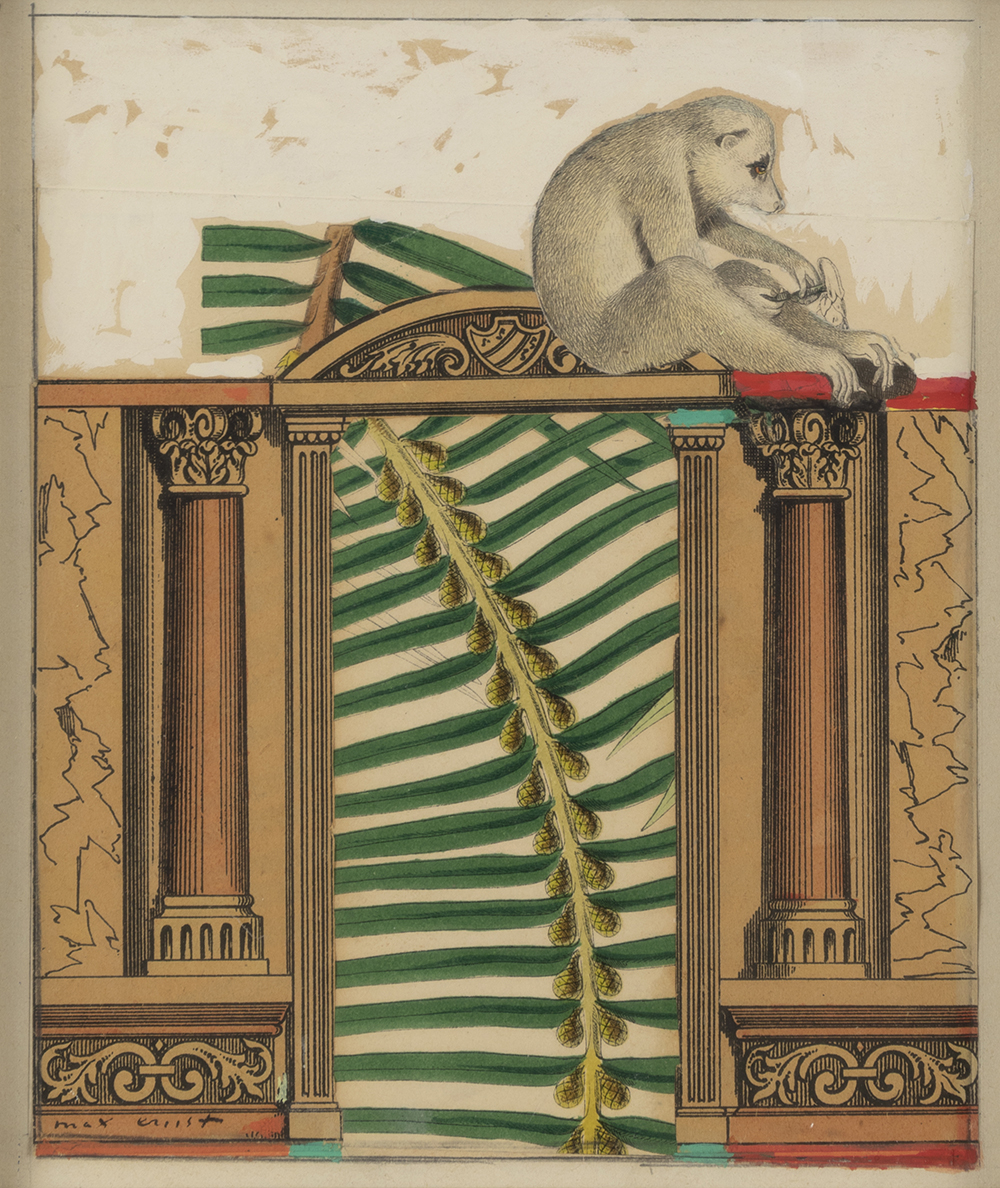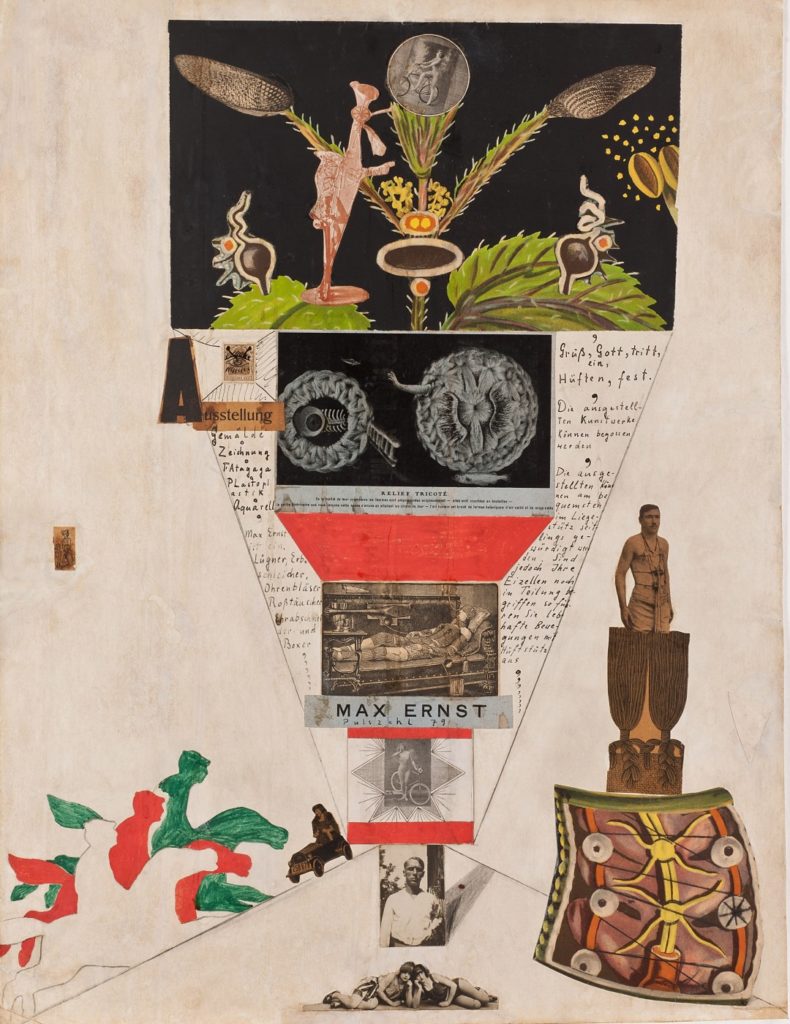Max Ernst. Ruiseñor chino. 1920. Art

Max Ernst Une Semaine de Bonté, 1934. Collage 73174 Max ernst
Max Ernst's Collaged Memories Magda Michalska 21 July 2022 min Read Share Max Ernst, L'esprit de Locarno, 1929, collage, Galerie Natalie Seroussi, Paris, France. Detail. In 1919, Max Ernst worked together with Jean Arp in Cologne where they founded a branch of the Dadaist Movement: Surrealism.

Untitled, c.1920 Max Ernst
Max Ernst A key member of first Dada and then Surrealism in Europe in the 1910s and 1920s, Max Ernst used a variety of mediums—painting, collage, printmaking, sculpture, and various unconventional drawing methods—to give visual form to both personal memory and collective myth.

Pin page
Max Ernst, Above the Clouds Walks Midnight, 1920, collage The phrase as beautiful as the chance encounter of an umbrella and a sewing machine on a dissecting table from Les Chants de Maldoror by the nineteenth century writer known as the Comte de Lautréamont was a touchstone for the Surrealists.

abovetheclouds1920. max ernst collage montage Pinterest Max
Max Ernst La colombe avait raison , 1926 Galerie Natalie Seroussi This is where Ernst's exploration of a diverse set of techniques comes in. By the end of World War I, in 1918, it was clear that the old means of making art—painting and sculpture—had become inadequate for expressing the urgent concerns of the day.

The Paris Review The Collages of Max Ernst The Paris Review
The Hundred Headless Woman is Ernst's first collage novel. It features a loosely narrative sequence of uncanny Surrealist collages, made by cutting up and reassembling nineteenth-century illustrations, accompanied by Ernst's equally strange captions.

Collage By Max Ernst in 2020 Max ernst, Art, Surrealism
Une semaine de bonté ("A Week of Kindness") is a collage novel and artist's book by Max Ernst, first published in 1934. It comprises 182 images created by cutting up and re-organizing illustrations from Victorian encyclopedias and novels. History

Pin by fralaime on Original Surrealist Collages In The Style of Max
Max Ernst first used collage in his work at the end of 1919, taking the process of collage further than anyone else had previously done. He created a unified image from the fragments, unlike the Cubists, and identified them as a single entity on the picture plane.

Max Ernst's Collaged Memories DailyArt Magazine
Max Ernst (born April 2, 1891, Brühl, Germany—died April 1, 1976, Paris, France) German painter and sculptor who was one of the leading advocates of irrationality in art and an originator of the Automatism movement of Surrealism. He became a naturalized citizen of both the United States (1948) and France (1958).

Max Ernst Dada Surrealist painter Tutt'Art Pittura • Scultura
Max Ernst's Collage Novels Are Part Séance, Part Victorian Underworld, and All Uncanny Ernst's trailblazing "collage novels" employ the dreamlike conjunction — the fusion or juxtaposition.

Max Ernst. Ruiseñor chino. 1920. Art
In 1927, Max Ernst developed the grattage as an application of the frottage technique in painting. Richly textured, relief-like materials such as wood, wire mesh, pieces of broken glass, and cord were placed under a canvas primed with numerous layers of paint.

Collage, Frottage, Grattage Max ernst, Art, Surrealism painting
In this segment of From the Vault, Emily Moore, Assistant Curator to the Aramont Library, discusses Max Ernst's Paramythes, a series of poems with eight orig.

Pin by Sean O'Connor on collage Creative photography, Collage, Max ernst
Max Ernst, Above the Clouds Walks Midnight, 1920, collage The phrase "as beautiful as the chance encounter of an umbrella and a sewing machine on a dissecting table" from Les Chants de Maldoror by the nineteenth century writer known as the Comte de Lautréamont was a touchstone for the Surrealists.

Collage Max Ernst encyclopedia of visual arts
Max Ernst, The Word, or Woman-Bird, 1921, collage with gouache and watercolor, 18.5 x 10.6 cm (private collection) A nude woman stands in the foreground, a collar around her headless neck and birds tucked between her legs and under her arm.

de Chinesische nachtigall, Max Ernst Max ernst, Photomontage, Collage
Written by: Meryam Joobeur. Produced by: Maria Gracia Turgeon, Habib Attia. Mohamed is deeply shaken when his oldest son Malik returns home after a long journey with a mysterious new wife. 'Collage' was created by Max Ernst in Surrealism style. Find more prominent pieces of symbolic painting at Wikiart.org - best visual art database.

Max Ernst Surrealismo desde Alemania Arte Taringa!
Max Ernst, an artist whose career spanned nearly three quarters of the twentieth century, liked to say that he took orders from a bird. The bird is called Loplop and appears in several of the forty-five works currently on display in Collages at Kasmin Gallery in Manhattan. In two of these, the large Loplop présente (1931) and smaller Loplop présente la mouton mystérieux (1960), the bird is.

Max Ernst on Twitter Max ernst, Photomontage, Art
For Max Ernst, collage technique is "the systematic exploitation of the accidentally or artificially provoked encounter of two or more foreign realities on a seemingly incongruous level - and the spark of poetry that leaps across the gap as these two realities are brought together".. Max Ernst is born on April 2 in Brühl, near Cologne.